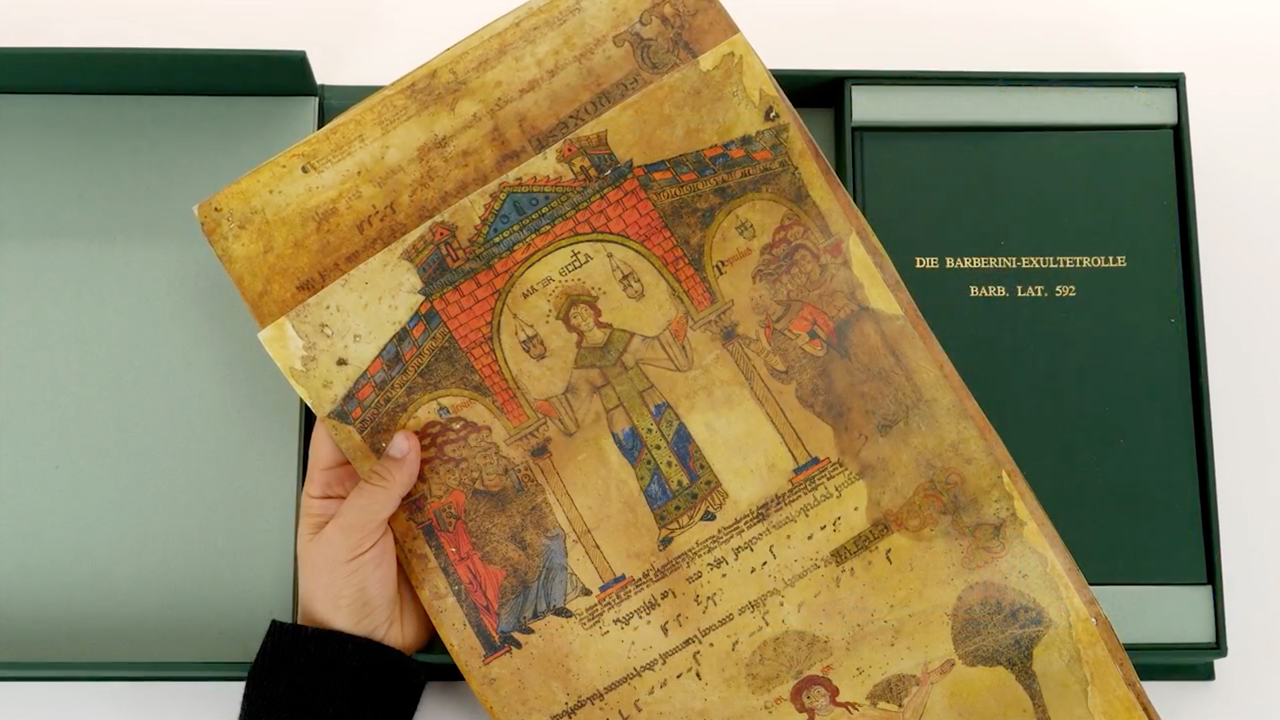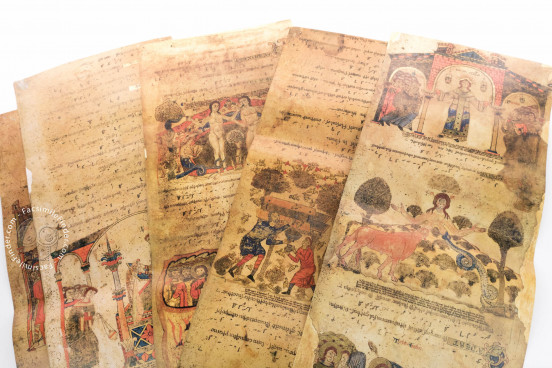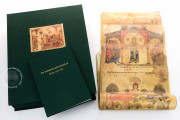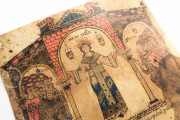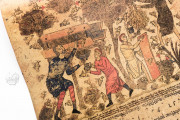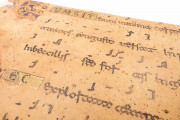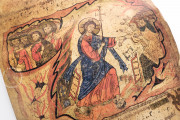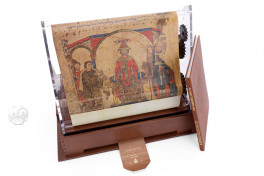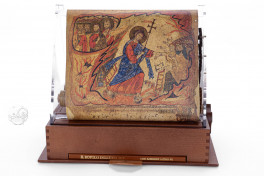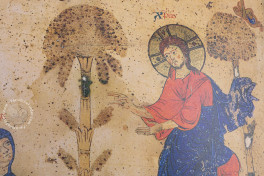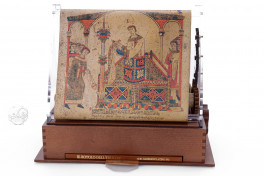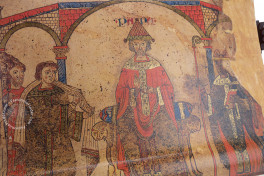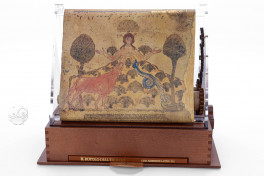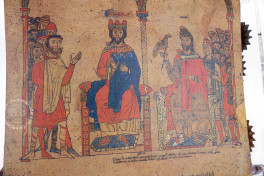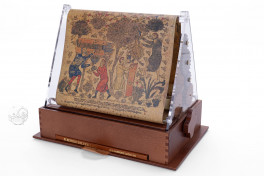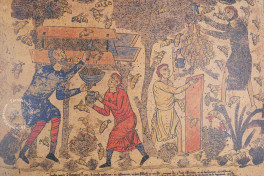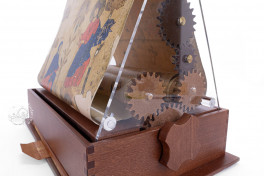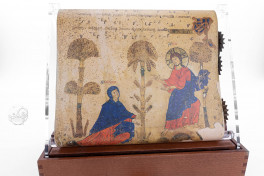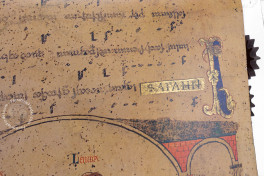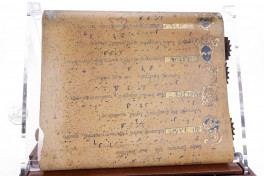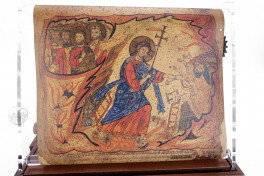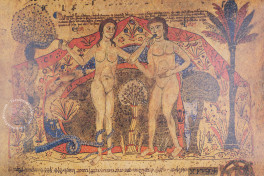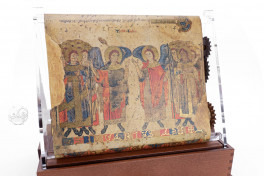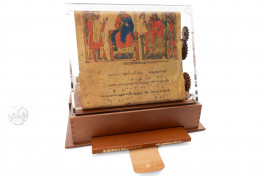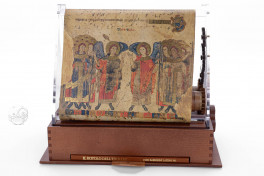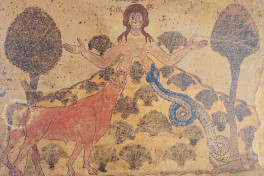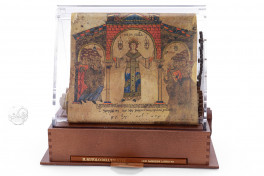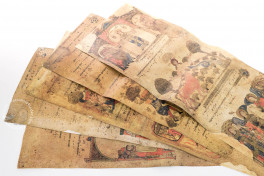The Barberini Exultet Roll is a scroll designed for use in the Christian liturgy during the Easter vigil. It gets its name from the opening word of the chant sung for the lighting of the paschal candle, the ritual action in which the roll was employed. It presumably, although not certainly, was made at the Benedictine monastery at Montecassino at the behest of the abbot, Desiderius of Benevento, when he renewed the monastery's library by having new manuscripts made in the 1070s and 1080s. The surviving portions of the roll boast ten imposing miniatures, including an image of an Exultet roll in liturgical use.
The paintings, which were probably painted by a pair of collaborating illuminators, are in a drawing style, with coloration in red, blue, gold, and olive green. The settings are sparse, making generous use of blank parchment, and the focus is on the figures and their interactions.
Unusual Format
The roll format is extraordinary, one reserved in the medieval period in Western Europe for special purposes and—in a liturgical context—almost exclusively for the Exultet. As the deacon chanted its text from the ambo (a pulpit), the scroll, which extended over the edge of the lectern, was slowly revealed to the congregation, its images upside down with respect to the text, so that text and music were right side up for the deacon and the images for those viewing the unfurling roll.
Portraits and Ceremony
The roll's images include biblical and other ecclesiastical subjects, with a pair of miniatures in succession of Mother Earth and Mother Church (section 1). There are also portraits of a pope, an emperor, and a nobleman (section 5), perhaps meant to represent the reforming Pope Gregory VII (d. 1085) or Desiderius as Pope Victor III, Holy Roman Emperor Henry IV (1050-1106), and a prince of Benevento.
A Blessing for the Bees
The Exultet chant includes a blessing of the bees responsible for providing the wax for the paschal candle, and one of the miniatures of the Barberini roll depicts beekeeping and shows the bees collecting nectar, the boxes in which the colonies were cultivated, and the beekeepers collecting wax or honey (section 4).
Beneventan Script, Notation, and Initial Style
The Barberini Exultet Roll was written by a single scribe in Beneventan Minuscule, the distinctive local script of southern Italy. The music is written in Beneventan neumes, like the script local to the duchy of Benevento. The painted initials are composed of gold interlaced foliage, as is characteristic of initials in Beneventan manuscripts.
At the end of the thirteenth century, inscriptions labeling the protagonists in display script were added to the images, along with explanatory annotations in the vernacular in Gothic Hybrida. Numerous repairs and a repainting campaign can also be dated to this time.
A Rare Survival
The Barberini Exultet Roll is one of only twenty-eight Exultet rolls surviving in whole or in part. Although it does not survive in its entirety, the full extent of its illumination can be appreciated in part because of an engraved copy made of its opening images in 1774 and also thanks to its close relationship to a complete roll, London, British Library, MS Add. 30337.
The roll was in the Barberini collection as early as the seventeenth century. It was separated into five sections in the twentieth century.
We have 2 facsimiles of the manuscript "Barberini Exultet Roll":
- Rotolo dell'Exultet. Exultetrolle facsimile edition published by Scrinium, 2008
- Exultet-Rolle facsimile edition published by Belser Verlag, 1988

